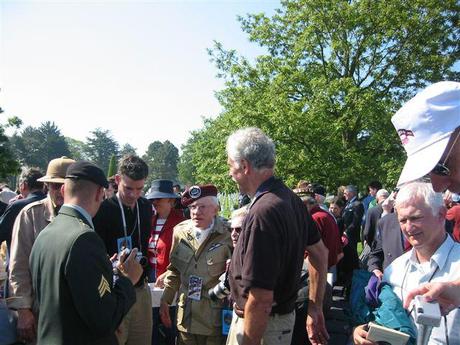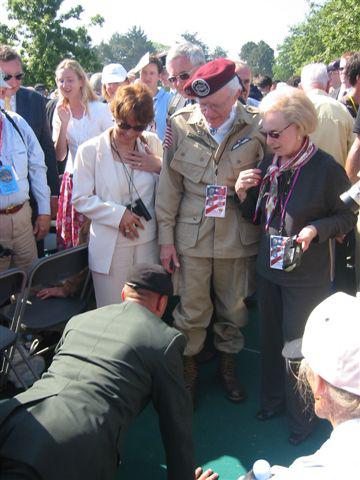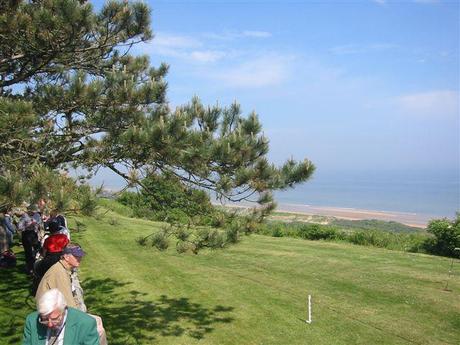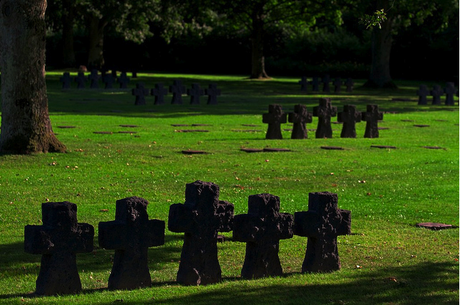
Omaha Beach, June 6, 2004. This sculpture is called "The Brave."
My mother was an army nurse in World War II, rushed through training early and young starting in January 1942. For the sixtieth anniversary of the D-Day invasion, on June 6, 2004, she came to France for the commemoration ceremony at Omaha Beach. We drove out to Normandy, she and I and one of the children, and as a veteran my mother was awarded a place in the first row as Jacques Chirac and George Bush spoke. It was a moving experience for me, sitting far back but seeing her silver hair in the distance and beyond her the actual D-Day vets sitting in a special section, almost all older than she was. The youngest ones are now in their mid-80s, but in 2004 there were still some peppy 76-year-olds.

Keeping order were some handsome young sergeants, very proud of being assigned this prestigious duty. This 82-year-old paratrooper (with the beret), who had jumped on D-Day, was planning to jump again with his combat buddies later. He and the sergeant exchanged funny banter till they had a crowd around them. The old guy jeered at young one and said that when he was a soldier, men had to do hand-clap pushups (where you clap your hands together in the middle of the pushup). The young sergeant promptly dropped to the ground and did ten of them, then jumped up to receive his respect!

I was sitting next to a public relations official from the Bush White House. She told me the White House was very worried about the old guys like my paratrooper who insisted on jumping again. What if one of them died? (The U.S. government denied them permission to jump as part of the ceremony; but the French allowed them to jump the next day.) My seat-neighbor had helped arrange the press credentials for this event. "We made the press badges pink!" she chuckled.

For me the most moving part of the day came afterwards. The veterans found their way to the overlook where you can see Omaha Beach below. Many of the old men had never been back since fighting their way up the beach that day. There were many tears and lowered heads.
Later we visited the German cemetery. It is a somber place. At the entrance is a sign that says, "Remember that many who lie here did not choose this fight."

Because I love Normandy and have been there many times, I know there is a huge Polish D-Day cemetery near Caen. Otherwise I would not even know that 10,000 free Poles fought in the Normandy invasion. Almost 700 of them lie in the quiet Grainville Polish military graveyard.

